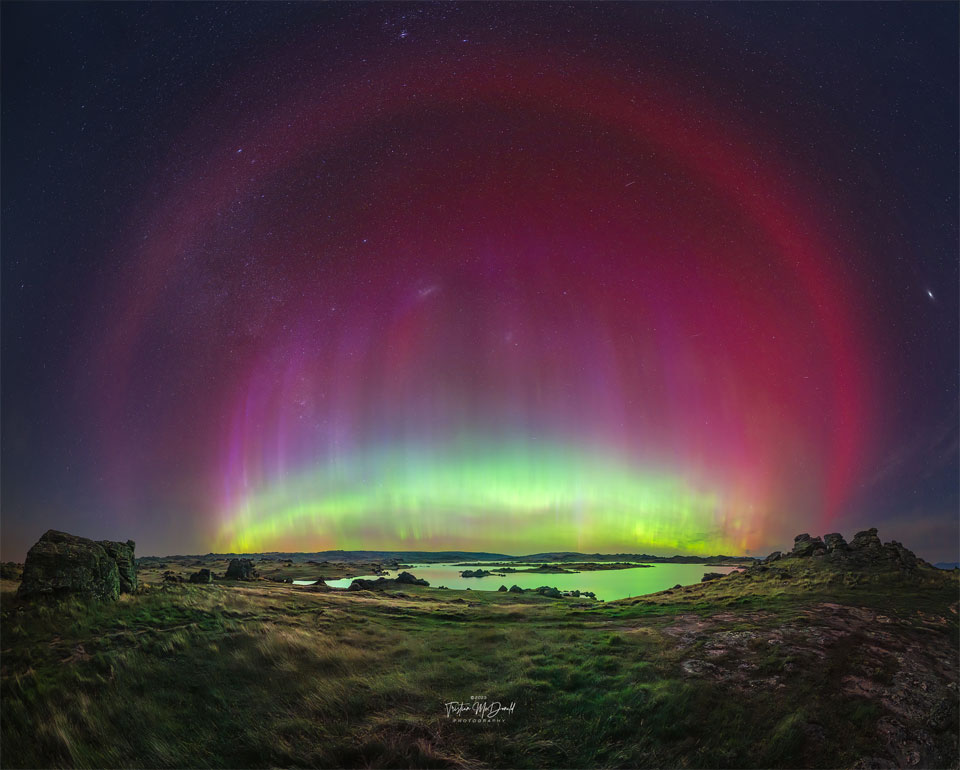來自紐西蘭的救援弧線
A SAR Arc from New Zealand

來源:Tristian McDonald;
Text: Tiffany Lewis
(Michigan Tech U.)|發表日期:2024-01-03
這個極光周圍不尋常的紅暈是什麼? 它是穩定極光紅弧(SAR)。穩定極光紅弧非常罕見,自 1954 年以來才得到承認和研究。 本月早些時候,在紐西蘭的普爾本(Poolburn)拍攝了一張廣角照片,捕捉到了環繞在更常見的綠色和紅色極光周圍的幾乎整個 SAR 弧。SAR 弧的形成原因仍是一個研究課題,但很可能與地球的保護磁場有關。 這種磁場通常會將從太陽風中進入的帶電粒子引向地球兩極。不過,它也會在靠近赤道的地方捕捉一圈離子,在太陽活動頻繁時,這些離子可以從磁層中獲得能量。這個離子環中的高能電子可以與地球電離層中比典型極光更高的氧氣碰撞並激發氧氣,從而使氧氣發出紅光。正在進行的研究發現,有證據表明紅色的 SAR 弧甚至可以轉變成紫色和綠色的 STEVE。
原文:What is that unusual red halo surrounding this aurora? It is a Stable Auroral Red (SAR) arc. SAR arcs are rare and have only been acknowledged and studied since 1954. The featured wide-angle photograph, capturing nearly an entire SAR arc surrounding more common green and red aurora, was taken earlier this month from Poolburn, New Zealand, during an especially energetic geomagnetic storm. Why SAR arcs form remains a topic of research, but is likely related to Earth's protective magnetic field, a field created by molten iron flowing deep inside the Earth. This magnetic field usually redirects incoming charged particles from the Sun's wind toward the Earth's poles. However, it also traps a ring of ions closer to the equator, where they can gain energy from the magnetosphere during high solar activity. The energetic electrons in this ion ring can collide with and excite oxygen higher in Earth's ionosphere than typical auroras, causing the oxygen to glow red. Ongoing research has uncovered evidence that a red SAR arc can even transform into a purple and green STEVE.
※ 本文由萌芽機器人自動轉貼自每日一天文圖(Astronomy Picture of the Day,APOD),原文為英文,正體中文是透過 DeepL 翻譯及 OpenCC 進行自動處理,內容僅供參考,若有任何錯誤之處還請見諒!
關於每日一天文圖:每日一天文圖網站是美國國家航空暨太空總署與密西根理工大學提供的服務,網站每天提供一張影像或圖片,並由天文學家撰寫扼要說明其特別之處。